Why you can trust Tom's Hardware
Comparison Products
As a hot new entry-level PCIe Gen4 SSD, we put the Adata XPG Gammix S50 Lite up against some of the most popular SSDs available. We included both the Samsung 980 PRO and 970 EVO Plus along with the Rocket NVMe 4.0, Rocket Q, and Rocket Q4 from Sabrent. Additionally, we threw in the Adata XPG SX8200 Pro, Crucial P5, and WD Black SN750, as well as a Seagate’s FireCuda 120.
Game Scene Loading - Final Fantasy XIV
Final Fantasy XIV Stormbringer is a free real-world game benchmark that easily and accurately compares game load times without the inaccuracy of using a stopwatch.

Adata’s XPG Gammix S50 Lite out-performs all the PCIe 3.0-based competition and even pulls away from Sabrent’s Rocket NVMe 4.0. Adata’s XPG Gammix S50 Lite is also the second-fastest SSD in this game benchmark, losing to the much more robust Samsung 980 PRO by just 0.03s across the five levels.
Transfer Rates – DiskBench
We use the DiskBench storage benchmarking tool to test file transfer performance with our own custom blocks of data. Our 50GB dataset includes 31,227 files of various types, like pictures, PDFs, and videos. Our 100GB dataset consists of 22,579 files, with 50GB of them being large movies. We copy the data sets to new folders and then follow-up with a read test of a newly-written 6.5GB zip file and 15GB movie file.
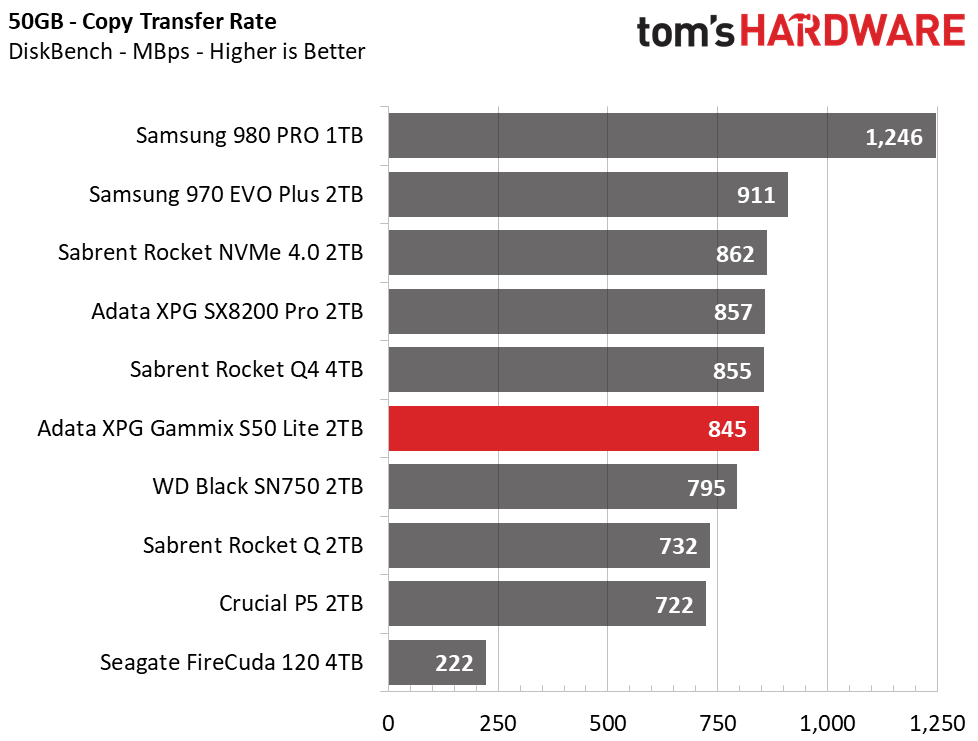

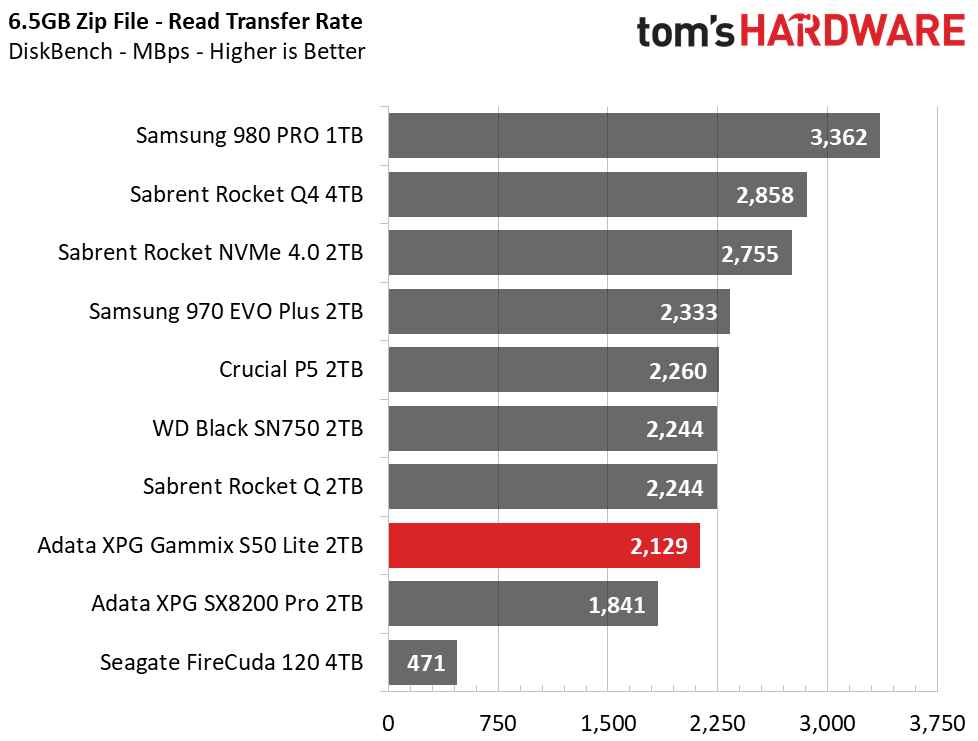
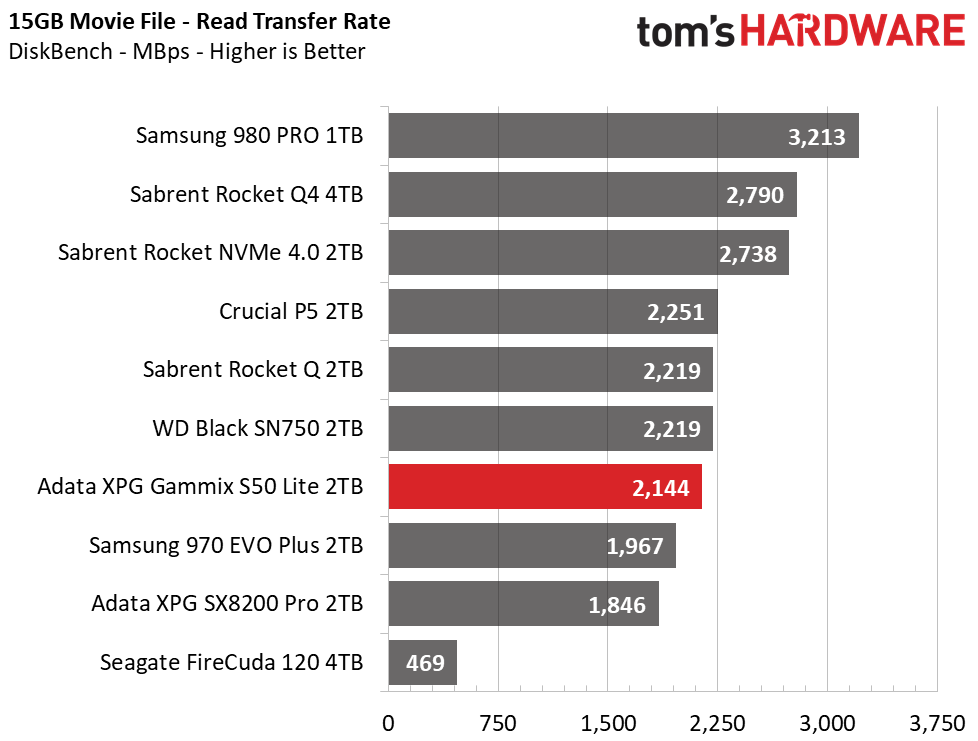
Adata’s XPG Gammix S50 Lite performs reasonably well when stressed with large file transfers. Copy performance is better than WD’s Black SN750, Crucial’s P5, and the Sabrent Rocket Q, but it isn’t as competitive in reading back large files. Still, it offers significantly faster transfers than any SATA SSD.
Trace Testing – PCMark 10 Storage Tests
PCMark 10 is a trace-based benchmark that uses a wide-ranging set of real-world traces from popular applications and everyday tasks to measure the performance of storage devices. The quick benchmark is more relatable to those who use their PCs for leisure or basic office work, while the full benchmark relates more to power users.

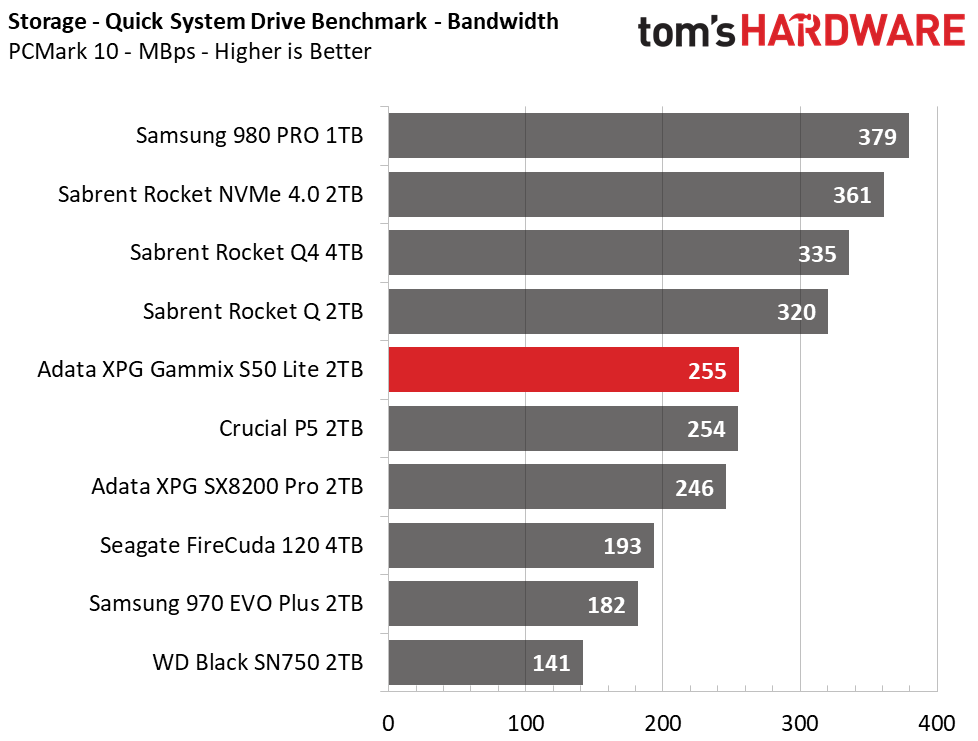


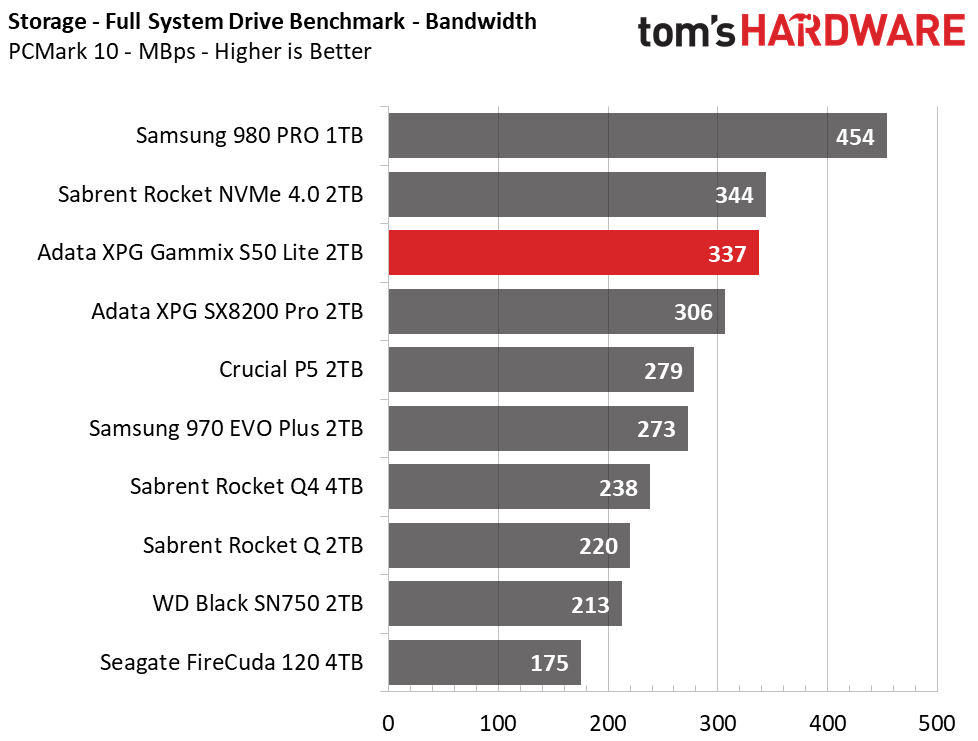
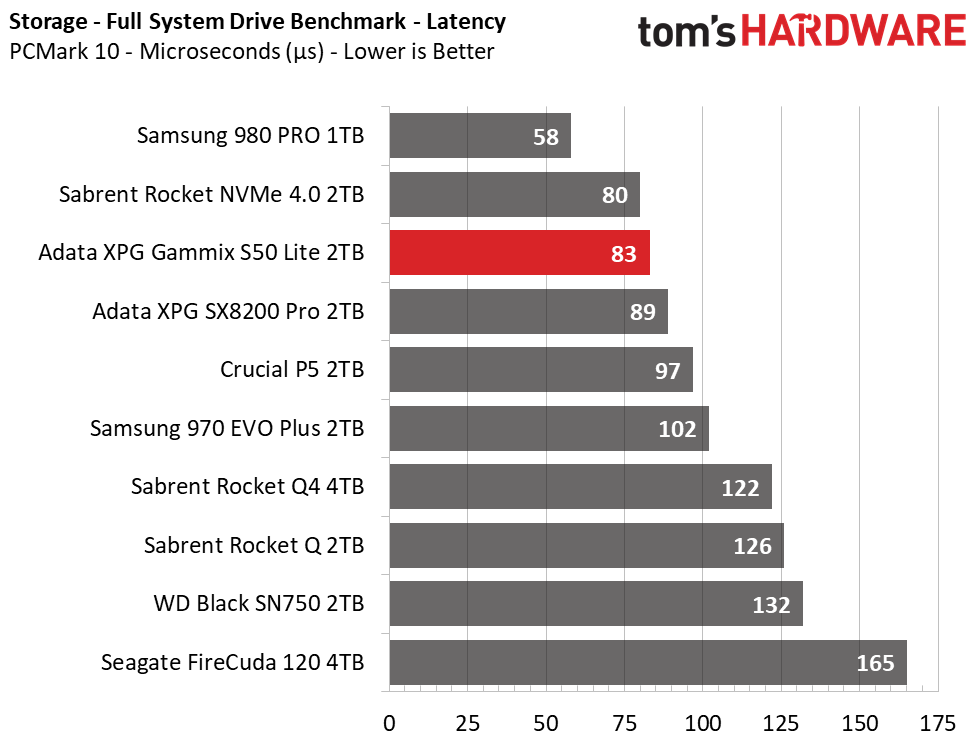
The Adata XPG Gammix S50 Lite performs similarly to the Adata XPG SX8200 Pro and Crucial P5 during PCMark 10’s quick system drive benchmark. When hit with the heavier full system benchmark, the S50 Lite catches up to the Sabrent Rocket NVMe 4.0 and tops the PCIe Gen3 SSDs, as well as the Sabrent Rocket Q4.
Get Tom's Hardware's best news and in-depth reviews, straight to your inbox.
Trace Testing – SPECworkstation 3
Like PCMark 10, SPECworkstation 3 is a trace-based benchmark, but it is designed to push the system harder by measuring workstation performance in professional applications.
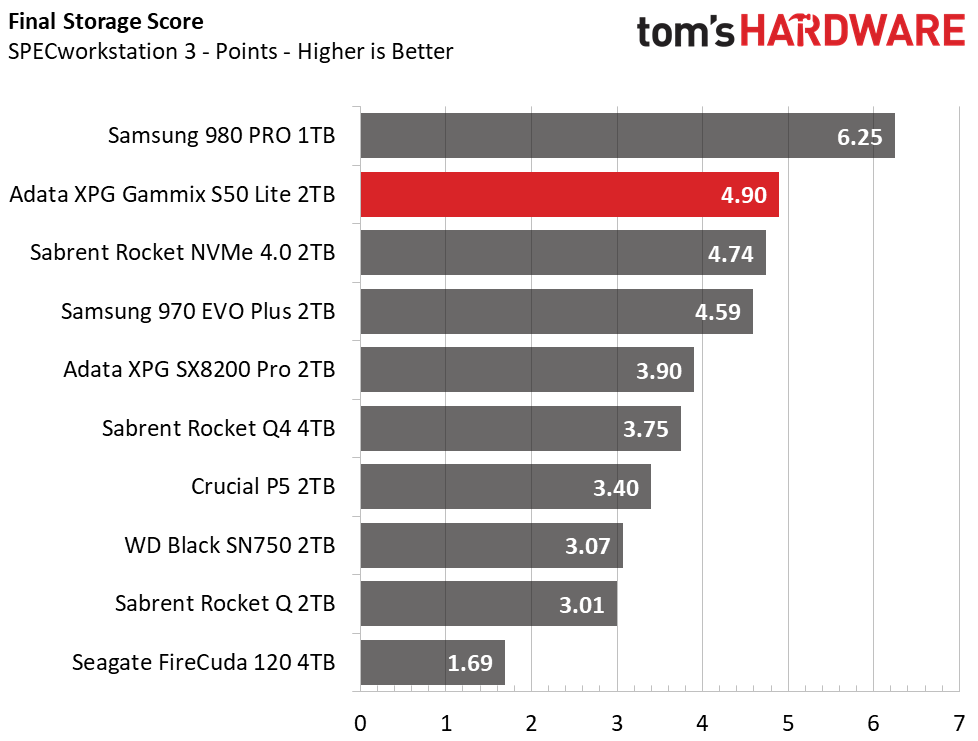
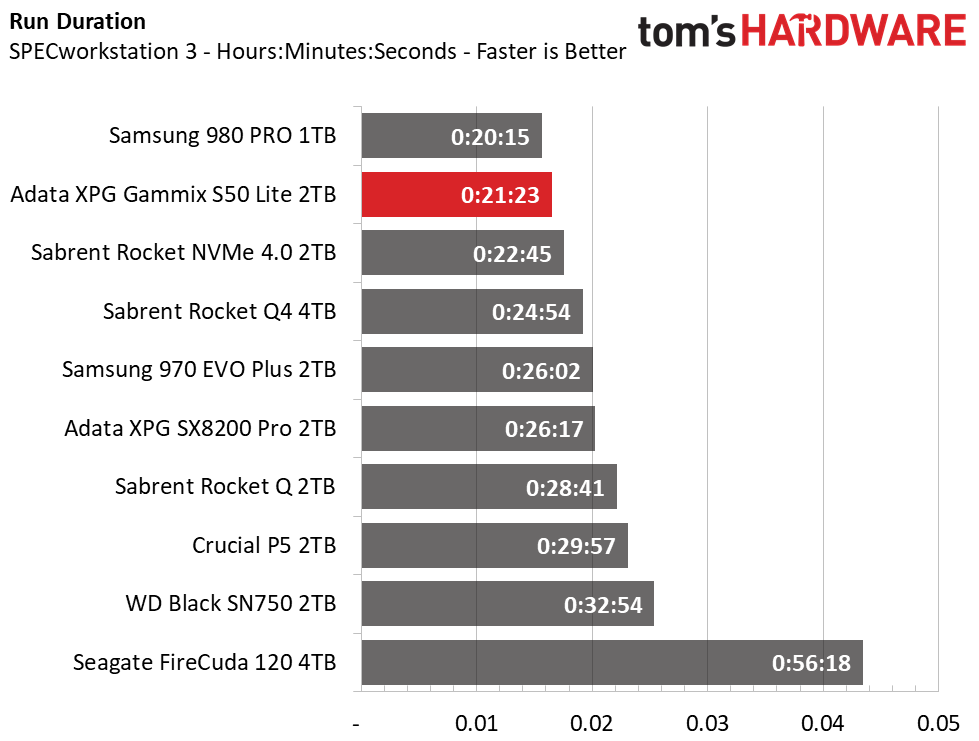
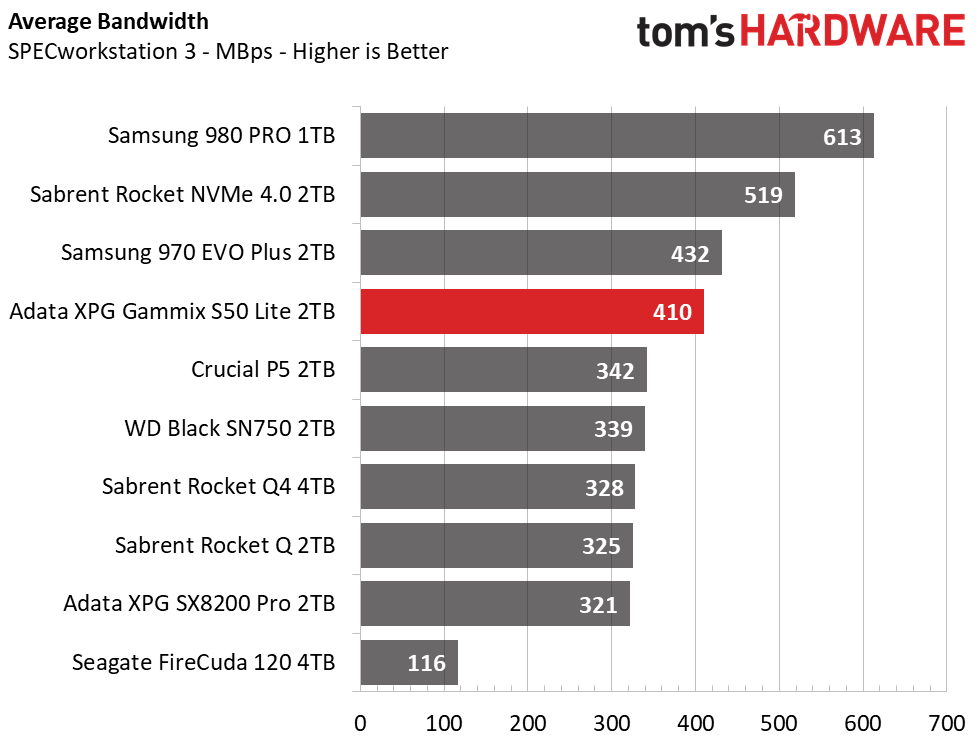
And, just like the Adata XPG Gammix S50 Lite delivered fast performance under PCMark’s heavier workloads, the SSD powers through SPECworkstation 3. Completing the test over a minute faster than the eight-channel Phison E16-based Sabrent Rocket NVMe 4.0 and lagging the Samsung 980 PRO by roughly the same, the S50 Lite lands in second place. Not only is it good for gaming, but it will also power through your prosumer workloads.
Synthetic Testing - ATTO / iometer
iometer is an advanced and highly configurable storage benchmarking tool while ATTO is a simple and free application that SSD vendors commonly use to assign sequential performance specifications to their products. Both of these tools give us insight into how the device handles different file sizes.
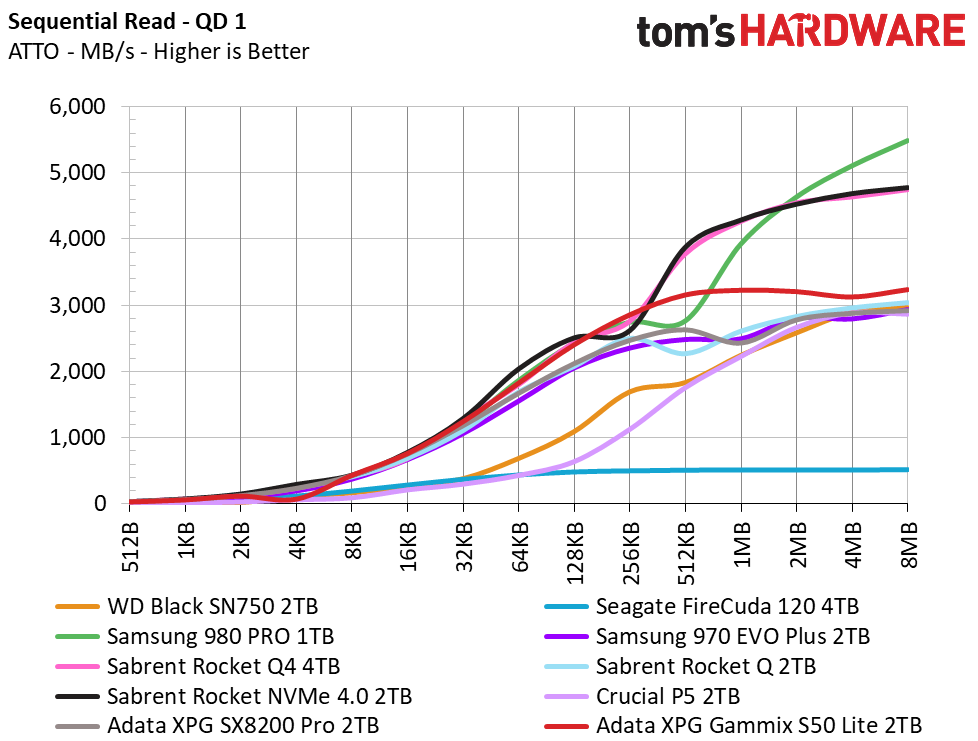
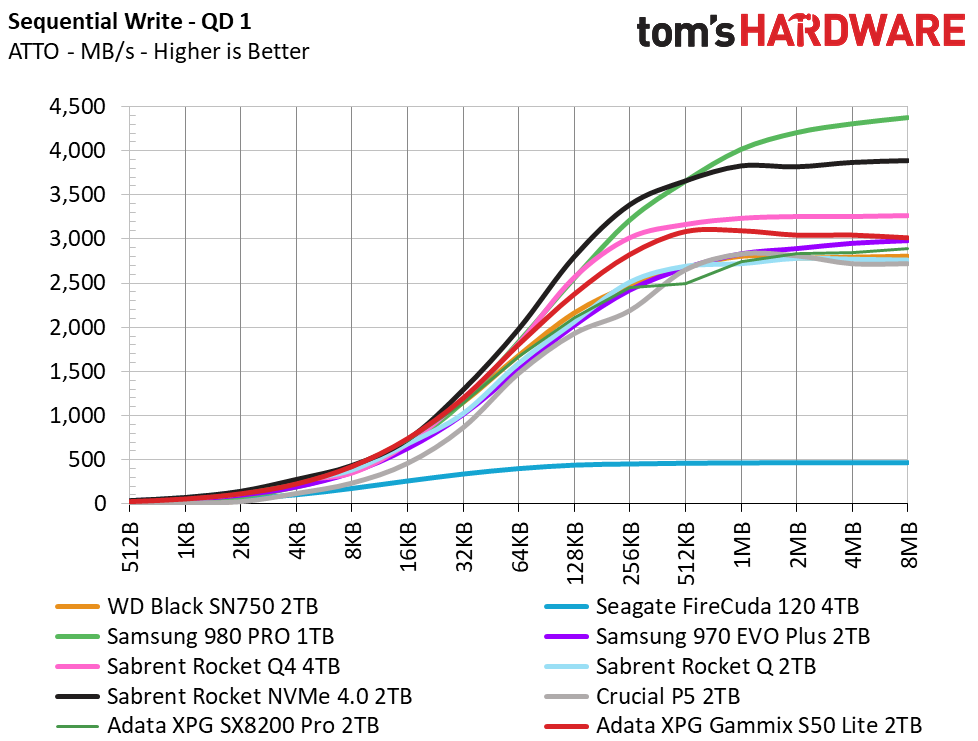
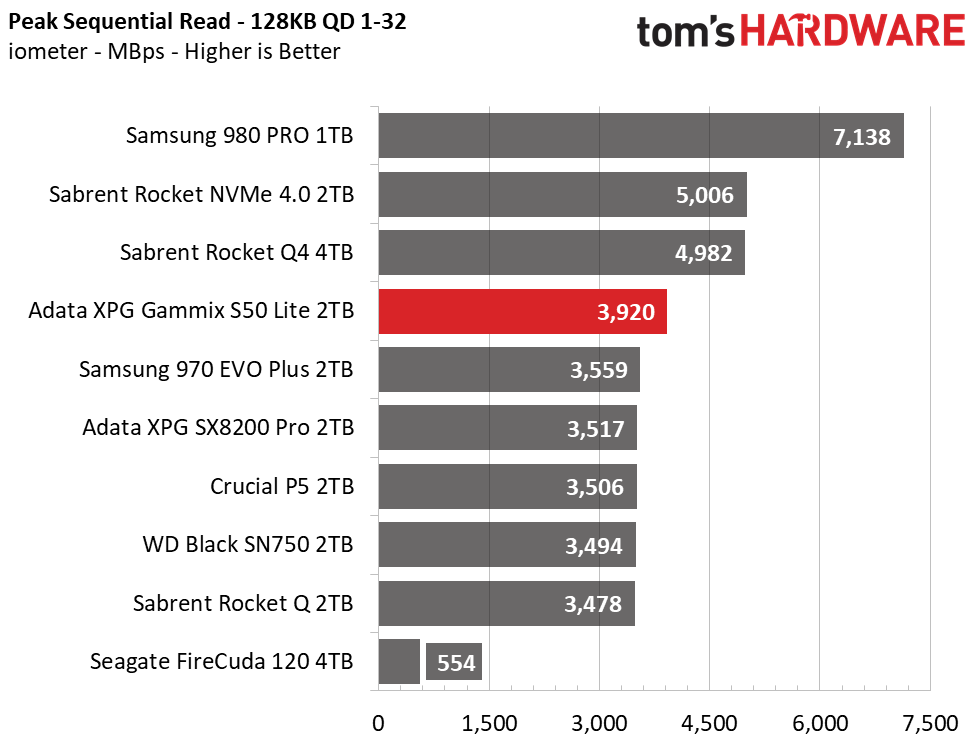
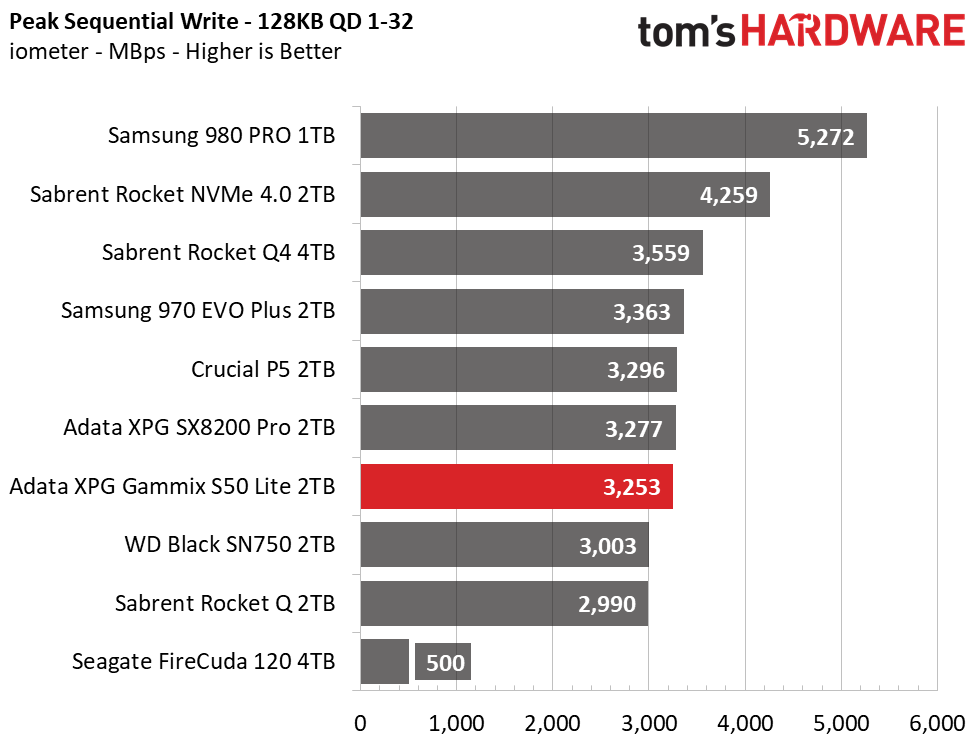
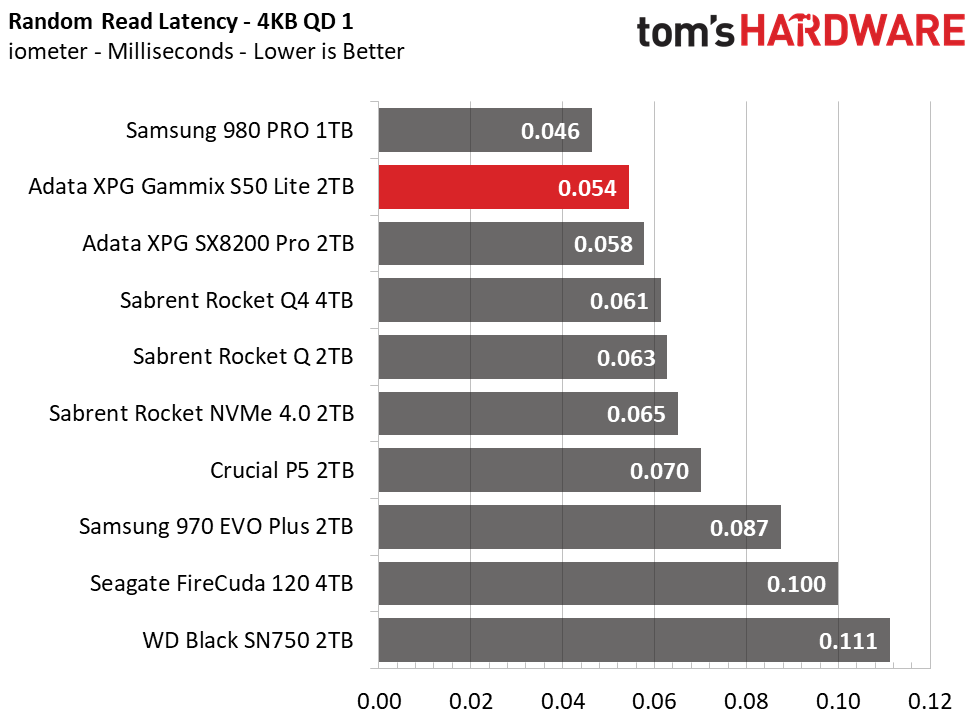
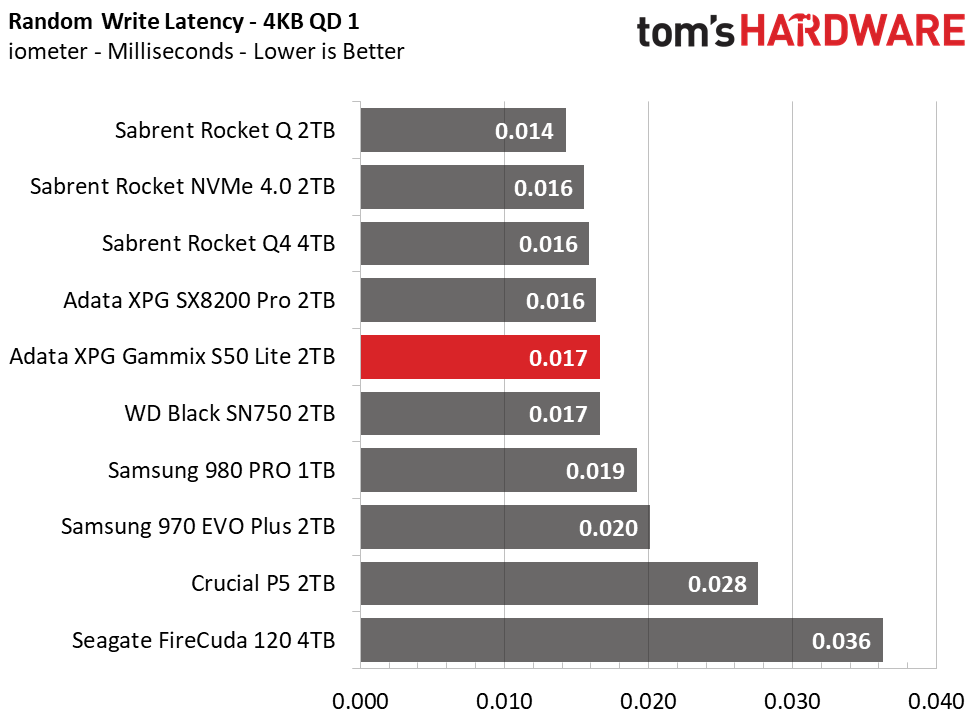

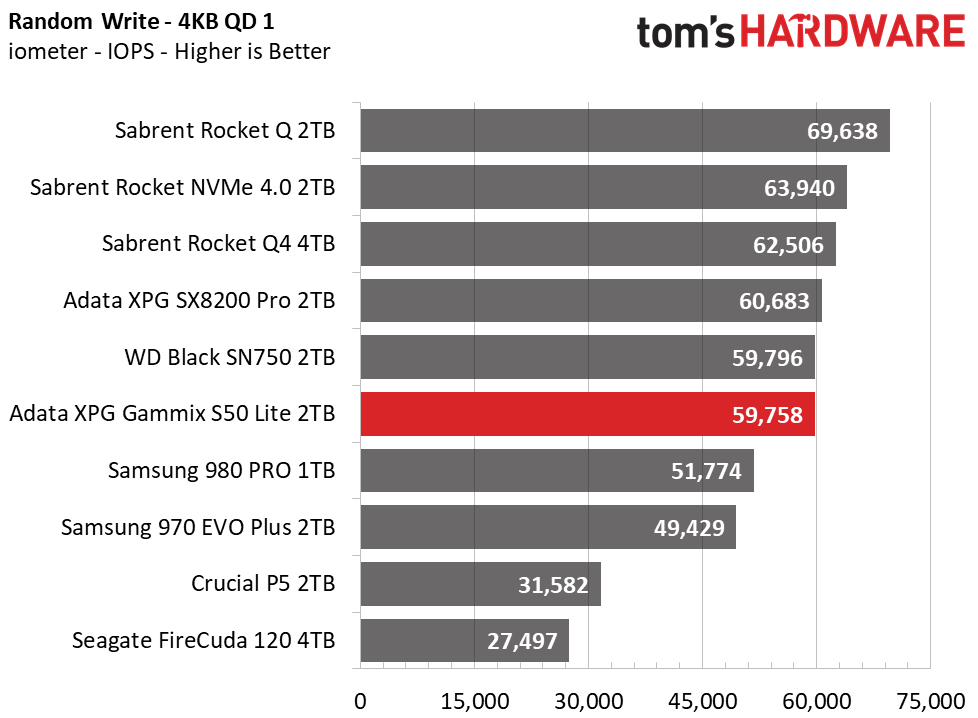

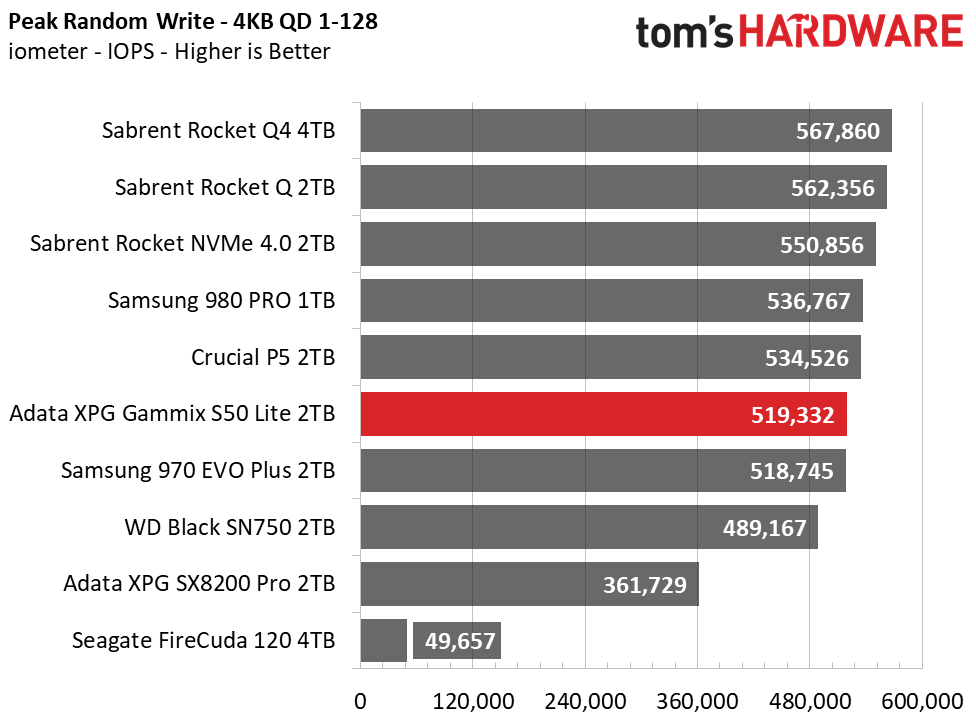
At a queue depth (QD) of 1, which represents most day to day file access at various block sizes, Adata XPG Gammix S50 Lite delivers responsive sequential performance that ramps up to peak speeds of 3.2/3.1 GBps at the 512KB file size. Under heavier loading, the SSD’s sequential performance improved to peak speeds of 3,920/3,253 MBps. Although Samsung’s 980 PRO offers the fastest peak speeds, Adata’s XPG Gammix S50 Lite provides very competitive low-latency random performance at lower queue depths.
Sustained Write Performance and Cache Recovery
Official write specifications are only part of the performance picture. Most SSDs implement a write cache, which is a fast area of (usually) pseudo-SLC programmed flash that absorbs incoming data. Sustained write speeds can suffer tremendously once the workload spills outside of the cache and into the "native" TLC or QLC flash. We use iometer to hammer the SSD with sequential writes for 15 minutes to measure both the size of the write cache and performance after the cache is saturated. We also monitor cache recovery via multiple idle rounds.
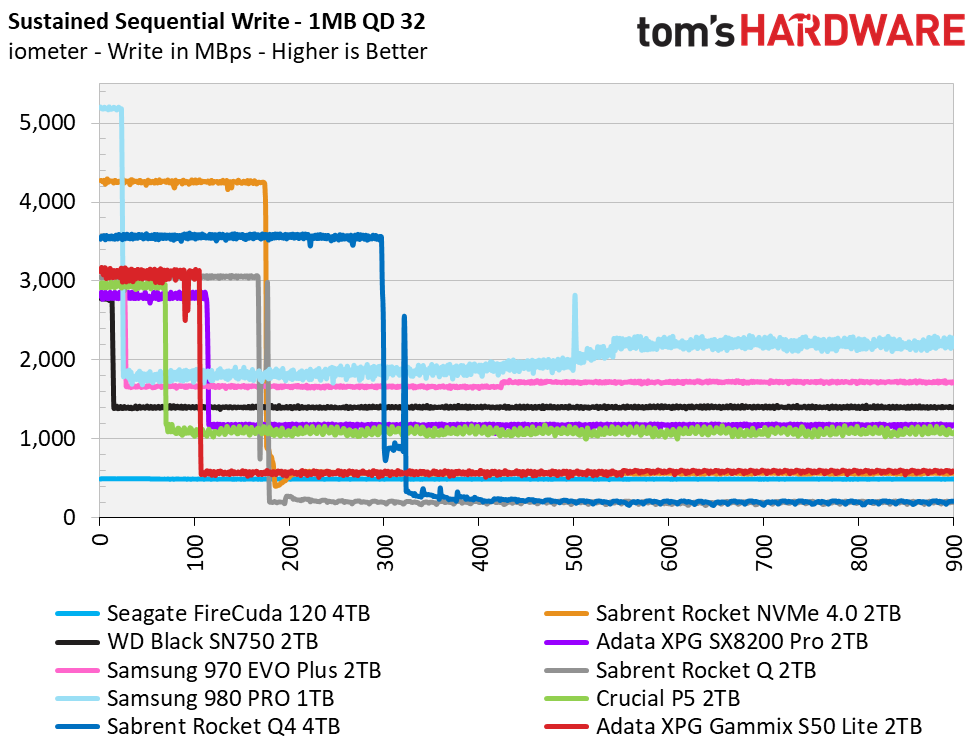
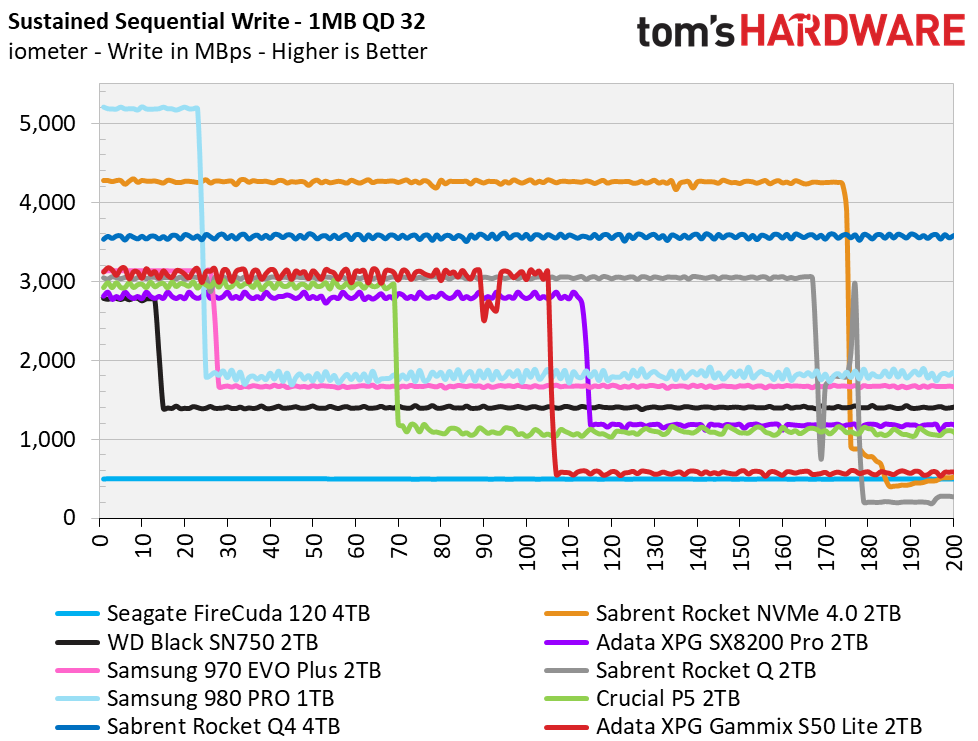
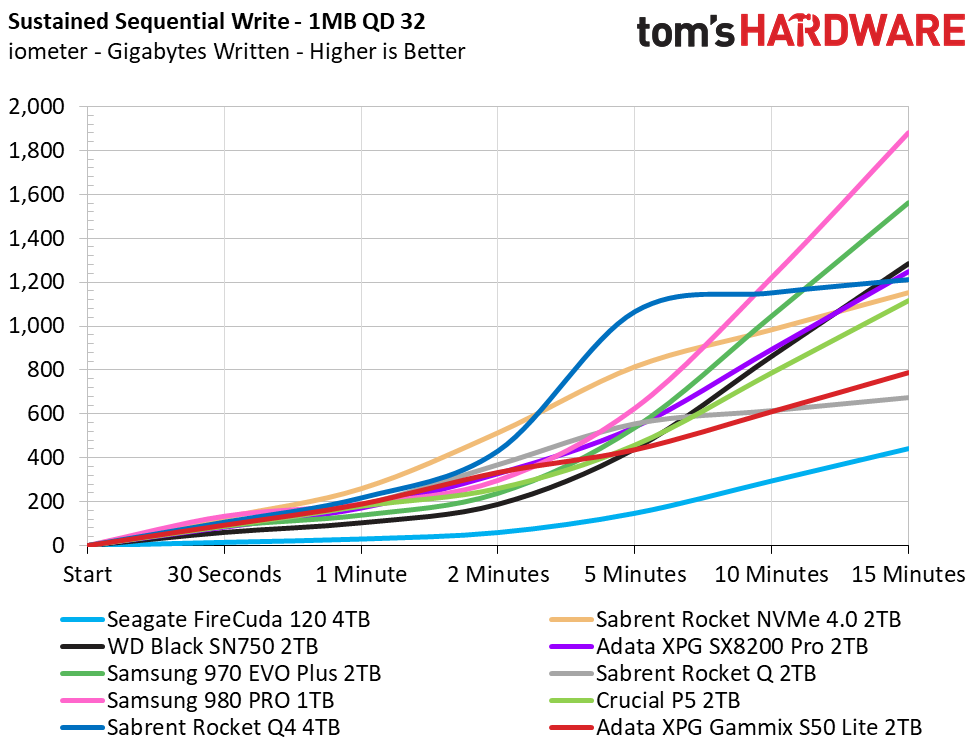
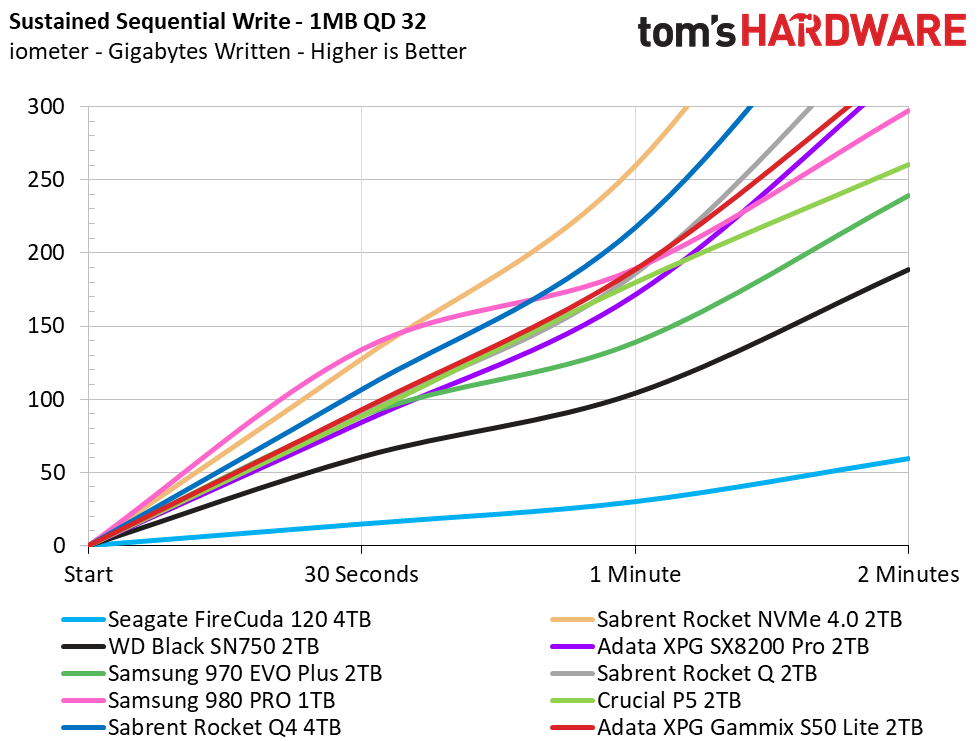

The Adata XPG Gammix S50 Lite absorbed 324GB of write data before performance degraded from an average rate of 3.1 GBps down to roughly 580 MBps. Unlike some of its more robust competitors with quad-, penta-, or even hexa-core CPU based NVMe controllers, the dual-core Adata XPG Gammix S50 Lite can’t maintain higher sustained performance due to the lack of horsepower.
However, like Crucial’s P5, the Gammix S50 Lite comes with a few tricks up its sleeve. After given a minute of idle time, the SLC cache almost recovers fully. The cache size remains the same, but after consecutive rounds, we see degraded write performance (2,100-2,600 MBps range) halfway through the following transfers, at least until the cache fills once more each round.
Power Consumption and Temperature
We use the Quarch HD Programmable Power Module to gain a deeper understanding of power characteristics. Idle power consumption is an important aspect to consider, especially if you're looking for a laptop upgrade. Some SSDs can consume watts of power at idle while better-suited ones sip just milliwatts. Average workload power consumption and max consumption are two other aspects of power consumption, but performance-per-watt is more important. A drive might consume more power during any given workload, but accomplishing a task faster allows the drive to drop into an idle state more quickly, ultimately saving energy.
We also monitor the drive’s temperature via the S.M.A.R.T. data and an IR thermometer to see when (or if) thermal throttling kicks in and how it impacts performance. Bear in mind that results will vary based on the workload and ambient air temperature.
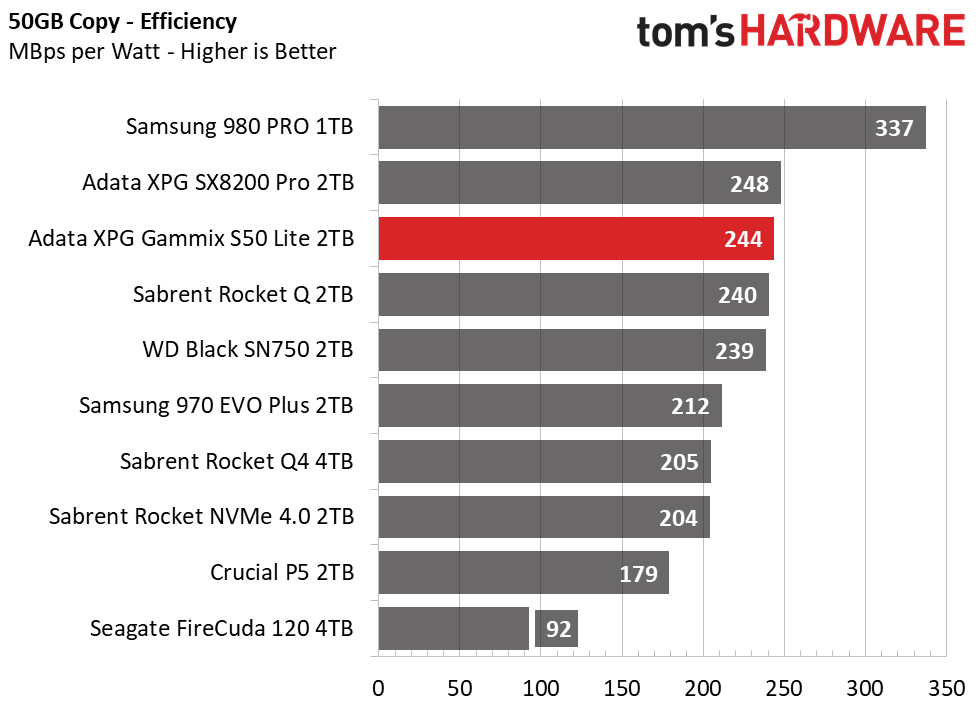


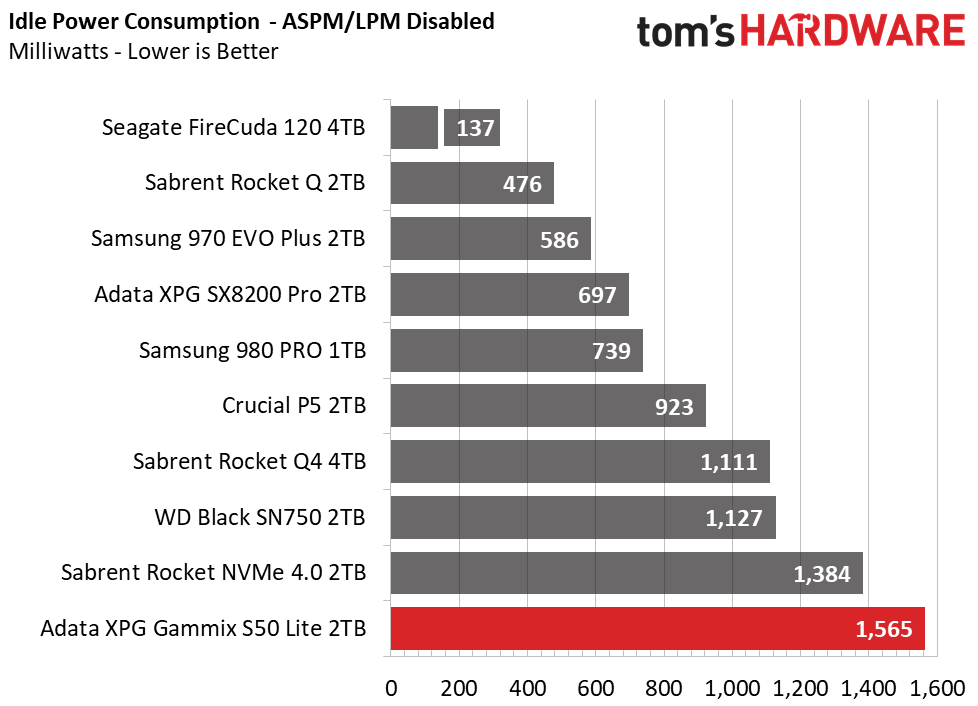
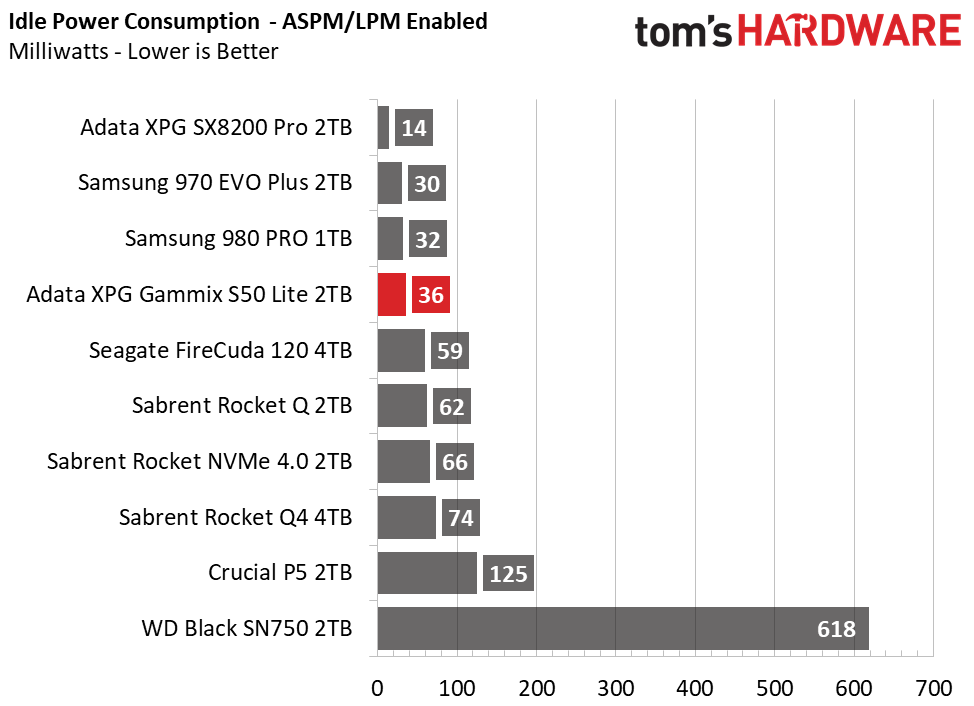
Adata’s XPG Gammix S50 Lite doesn’t demonstrate chart-topping power efficiency, but it achieves very good scores overall. It posts a similar efficiency score to the Adata XPG SX8200 Pro but behaves differently at idle. The S50 Lite consumed 1.6W with ASPM disabled, more than any other SSD in the comparison pool. However, when we enabled the feature, the S50 Lite sipped power, but at 36mW, it is not quite as impressive as the SSDs with the SM2263EN and SM2262EN controllers.
When transferring a few hundred gigabytes of data to and from the SSD, its operating temperatures were kept well under wraps thanks to the brushed aluminum heatsink. The SSD’s temperature peaked at 68 degrees Celsius with no airflow, and no thermal throttling occurred. Heat shouldn’t pose much of a threat even if you hit the drive with heavy prosumer workloads.
MORE: Best SSDs
MORE: How We Test HDDs And SSDs
MORE: All SSD Content

Sean is a Contributing Editor at Tom’s Hardware US, covering storage hardware.
-
tennis2 Half the channels and 96L TLC compared to the SX8200 Pro while delivering essentially identical performance AND power characteristics? Disappointing. Hopefully this is just a matter of firmware tuning needed.Reply -
deesider Surely the S50 Lite is just deliberately hamstrung to bring perceived value to the later 'Pro' version. Otherwise just pointless compared to the SX8200 ProReply -
Co BIY This article deserves an update after the bait-and-switch games Adata was found to be playing with the SX8200 Pro. How can the consumer be sure that they are getting the same hardware that Tom's has tested.Reply
https://www.tomshardware.com/news/adata-xpg-sx8200-pro-controller-change -
car2000 I am thinking of buying this drive, based on the strong review.Reply
I am concerned by this review- https://www.storagereview.com/review/xpg-gammix-s50-lite-pcie-4-0-ssd-review
How can they come to such different conclusions on the merits of this unit? -
deesider Reply
It seems Storagereview gave it a poor review because it is the slowest of the PCIe4 drives, while Tom's gave it a good review because it is the cheapest of the PCIe4 drivescar2000 said:I am thinking of buying this drive, based on the strong review.
I am concerned by this review- https://www.storagereview.com/review/xpg-gammix-s50-lite-pcie-4-0-ssd-review
How can they come to such different conclusions on the merits of this unit? -
car2000 I know what you mean, but the Storage Review article says that this drive is slow even in comparison with PCIe3 drives.Reply
I am wondering if it is because the Tom's review was for the 2 GB version, whereas the Storage Review Article is for the 1 GB version, and the 1 GB version of the drive is slower? It does appear to have a lower specification in some areas. -
deesider Maybe it also relates to their testing methodology. Storage review say that they completely fill the drive then partition 5% to test on. Perhaps that has an unexpected effect?Reply -
javiindo It looks like all brands have some controllers to choose from and you will never know which one they are using. tha'ts why they never say the exact controller they are using. Just general speed performance. They don't want to be attached to any supplier/brand.Reply